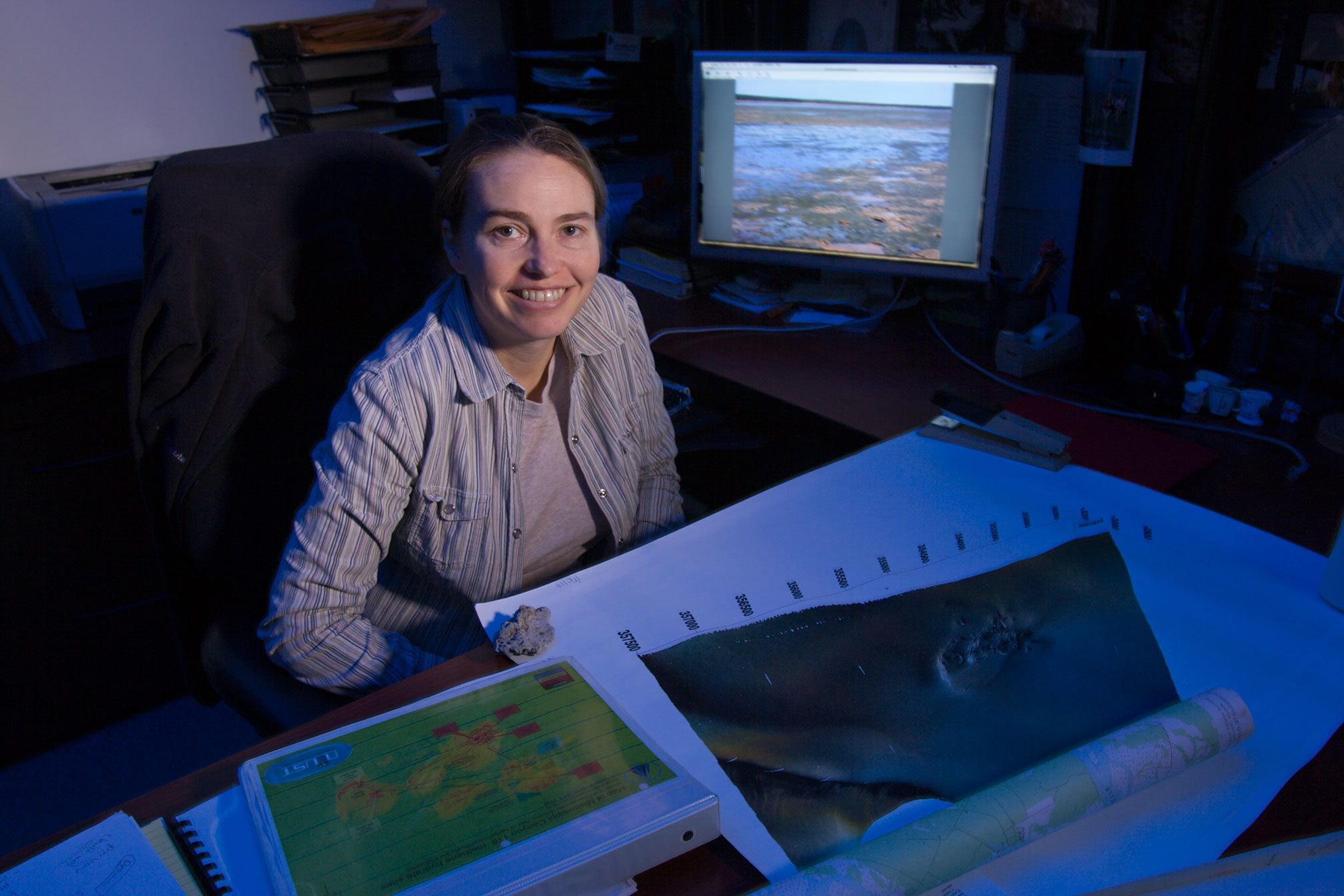Everyone knows of volcanoes and their ability to do anything from burying cities to changing the climate. Less well-known are mud volcanoes, vents bubbling gases and a slurries of fine solids suspended in liquids. The most familiar of the latter are the gurgling and flapping vents in places such as Yellowstone National Park.
Even more obscure are undersea mud volcanoes, but a new study by a biogeochemist at UGA and her colleagues has shown for the first time distinct and unexpected patterns of microbial metabolism where fluids emanating from seafloor mud volcanoes and their cousins called brine pools mix with overlying seawater.
“Very few results describing rates of microbial activity in seafloor brines have been published, and none show the detailed stratification of microbial processes with the brine fluids documented here,” said Samantha Joye, a faculty member in the department of marine sciences.
Implications for life processes
The research has implications for life processes on everything from early Earth to moons in the Solar System-such as Jupiter’s Europa and the planet Mars-where brine fluids could support microbiological life.
The study was published this month in the journal Nature Geosciences. Other authors of the paper include Vladimir Samarkin, Beth Orcutt and Christof Meile also of UGA; Ian McDonald of Texas A&M University; Kai-Uwe Hinrichs and Marcus Elvert of the University of Bremen; Andreas Teske, Karen Lloyd and Mark Lever of the University of North Carolina at Chapel Hill; and Joseph Montoya of the Georgia Institute of Technology.
The team studied two kinds of emission areas at depths of about 600 meters beneath the Gulf of Mexico: mud volcanoes and seafloor brine pools. Undersea mud volcanoes can be quite active, with plumes of gas, mainly methane, extending hundreds of meters from the seafloor. These features can cover large areas, and gas bubbles are a consistent feature. Brine pools form in depressions in the largely flat ocean bottom and are less active but can be quite expansive, too.
“Almost nothing is known about deep-sea mud volcanoes,” said Joye. “And seafloor brine pools represent dynamic and challenging habitats where microorganisms endure variations in fluid composition, temperature and flow regimes.”
Hypersaline brine pools are a unique and understudied seafloor habitat in the Gulf of Mexico. Brine pools form when warm, salty fluids migrate up through the sediments through fissures. At places where seepage is active, brine fluids with four or five times as much salt as seawater also escape. The brine is much denser than sea water, so it pools on the surface after cooling to ambient temperature.
One of the reasons so little is known about undersea mud volcanoes and brine pools is their sheer inaccessibility. Joye used the Johnson Sea Link, a deep-sea scientific research submersible built by the Harbor Branch Oceanographic Institution, to study the features on the ocean floor.
For the first time, the team studied “slices” of water above a mud volcano and a seafloor brine, with an eye to understanding how microbial processes change in their water columns. While both areas were anoxic (depleted of dissolved oxygen) and hypersaline and thus inhospitable for most life, microorganisms thrive there. The Joye team’s study documented differences in the depth distribution and magnitude of key microbial processes.
Surprising discoveries
Joye and colleagues discovered that rate of sulphate reduction and acetate production were greater in the brine pool, while the mud volcano supported higher rates of methane production.
“We believe the composition of the microbial communities and their metabolism are linked to differences in geochemical and flow differences between the sites,” said Joye.
Another surprise was that microbial activity was measurable at the deepest samples collected, so it is feasible that active microbes extend deep into the subsurface of the mud volcano systems in the Gulf of Mexico, linking the deep biosphere with ocean-bottom habitats.
“This work integrates so many aspects of science so well, that it has the potential to tell us many things about processes on the ocean floor,” said Joye. “For example, we now know that flow regimes in deep sea brines dictate dominant patterns of microbial activity. Also, when you think of hypersaline systems, we documented methane production from acetate at salinity levels twice the accepted levels.”
The work was supported by grants from the National Science Foundation, the National Oceanic and Atmospheric Administration, the Department of Energy, the American Chemical Society, the Environmental Protection Agency and NASA.


